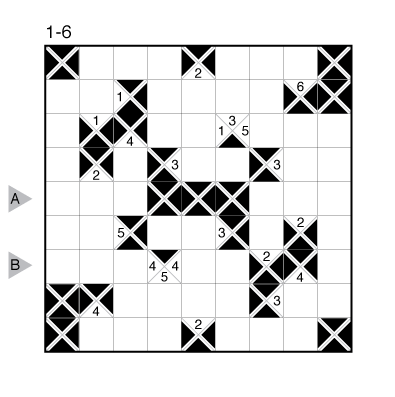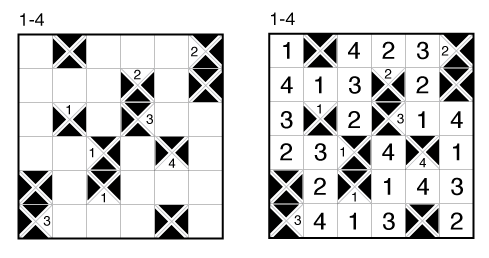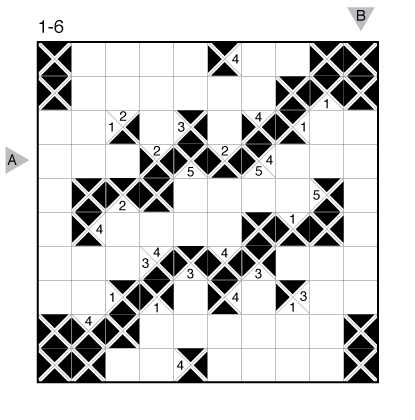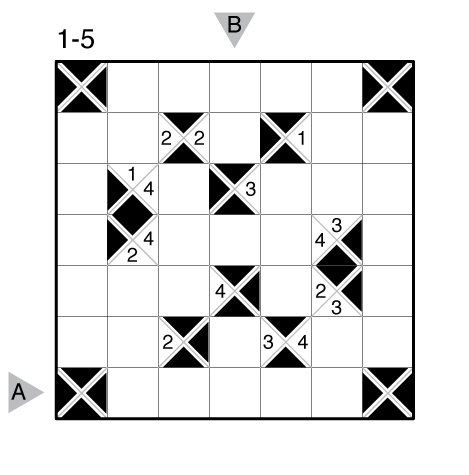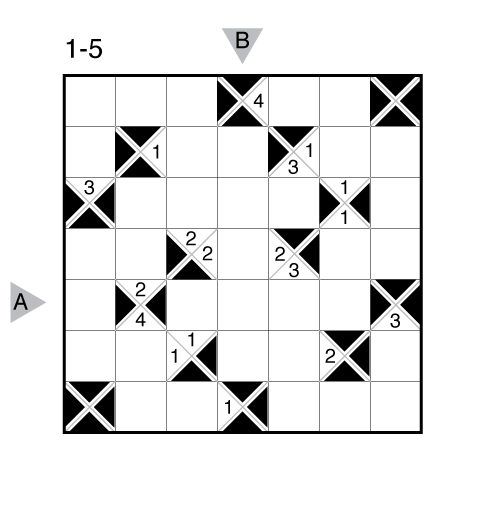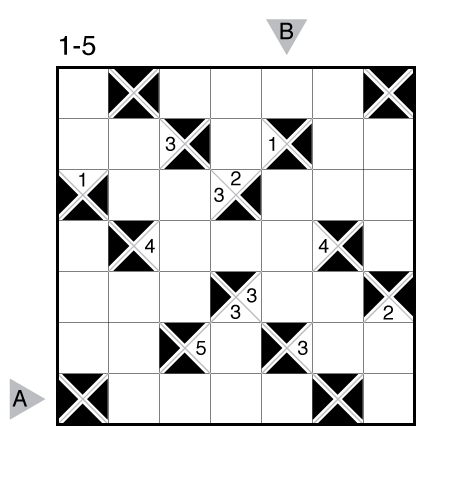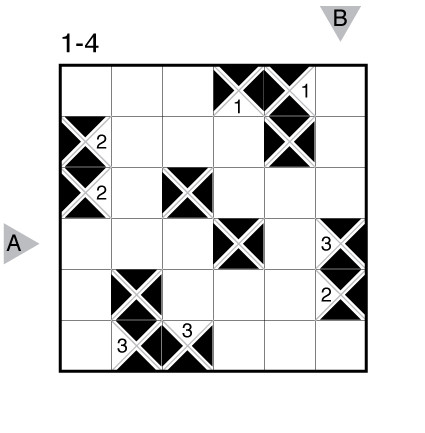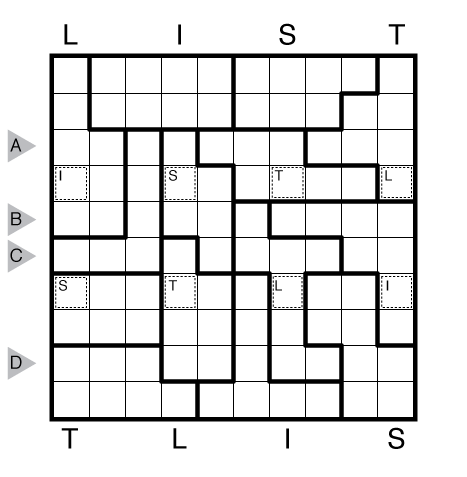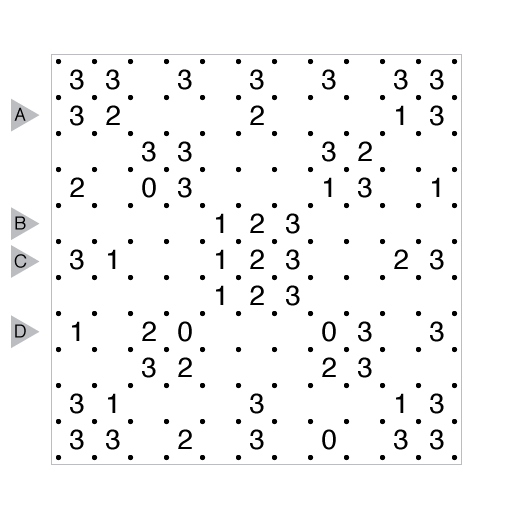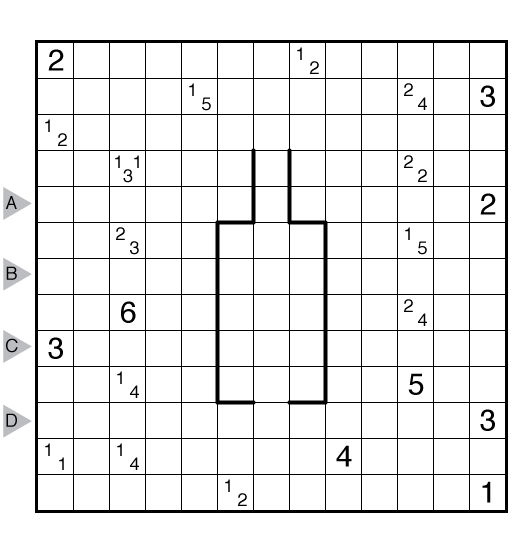Sashikabe by Grant Fikes
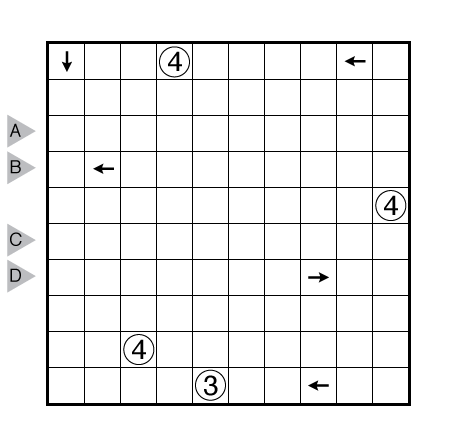
or solve online (using our beta test of Penpa-Edit tools)
Theme: Logical
Author/Opus: This is the 197th puzzle from our contributing puzzlemaster Grant Fikes.
Rules: Hybrid of Nurikabe and Sashigane, originally created by Grant Fikes. Standard Nurikabe rules are in place for the “ocean” (connected and no 2×2 squares) but the island rules have changed as follows:
1. All islands must be L-shaped and one cell wide. Islands cannot share an edge.
2. An arrow clue points from an end of an island towards the bend in the middle.
3. A circle clue indicates the bend in the middle of an island; if a number is also present, this is the size of the island in cells.
4. An island can have 0, 1, or more of these clues given.
Also see this example and solution by Thomas Snyder:
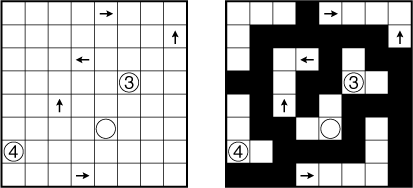
Answer String: Enter the length in cells of each of the black segments (the unnumbered, connected “ocean”) from left to right for the marked rows, starting at the top. Separate each row’s entry from the next with a comma.
Time Standards (highlight to view): Grandmaster = 2:30, Master = 4:00, Expert = 8:00
Solution: PDF
Note: Follow this link for classic Nurikabe puzzles on this website and this link for other variations on Nurikabe puzzles. If you are new to this puzzle type, here are our easiest Nurikabe puzzles to get started on.

